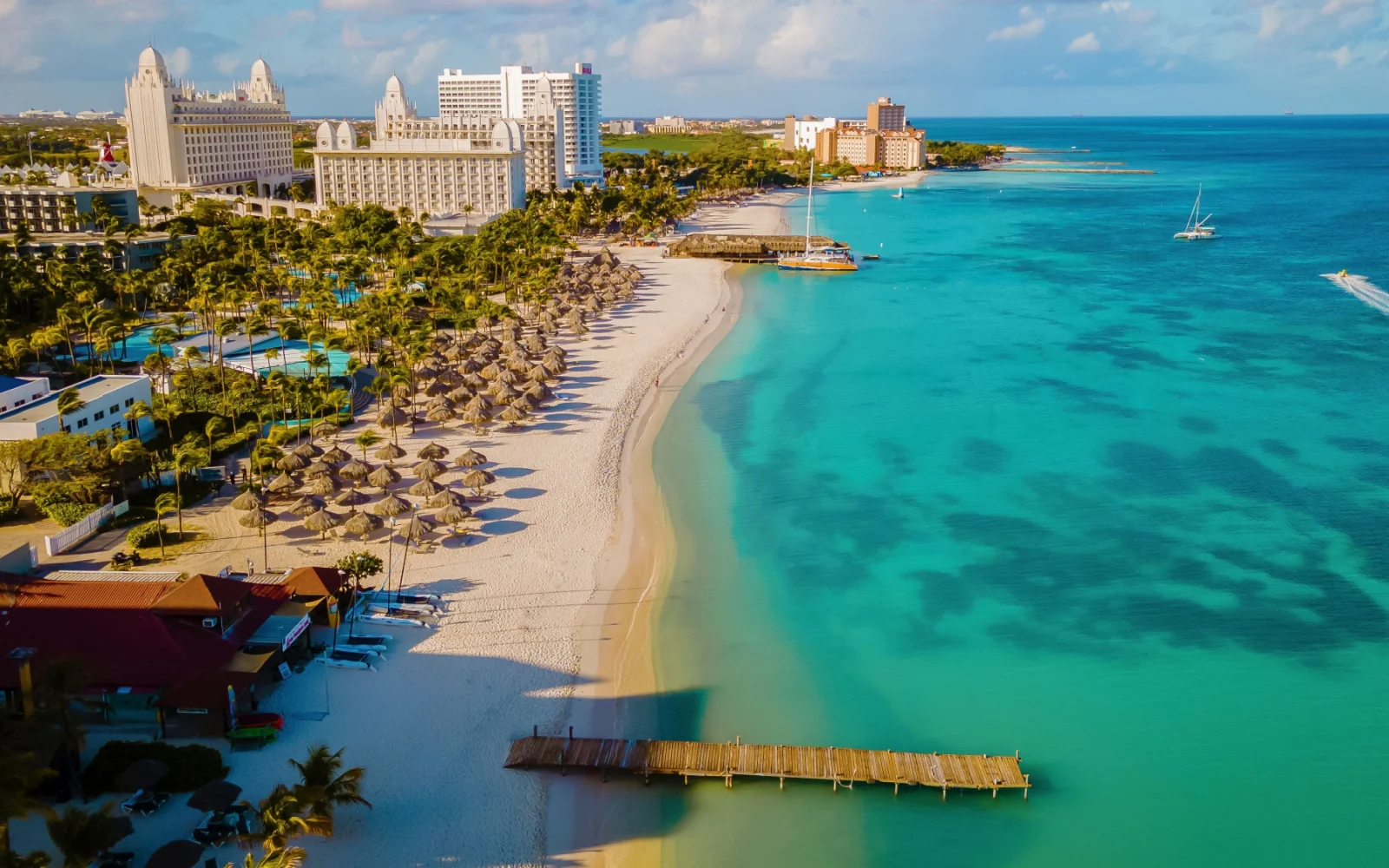What's the average trip to Aruba cost?
A one-week trip to Aruba for two typically costs around $3,700, covering accommodations ($150/night), flights ($400/person), food, drink, and activities ($100/day/person), and transportation ($500). Costs can vary depending on your choice of lodging—budget options like hostels or Airbnbs are cheaper, while luxury resorts and all-inclusive packages can increase the price.
Aruba likes to call itself “one happy island.” No one would deny that this tiny gem, just 20 miles long and six miles wide, is a tropical paradise. There are beaches of golden sand and water loaded with sea life.
A wild national park stretches across the middle of the island. The Dutch heritage and Dutch place names provide a quaint touch of historical charm. Because it’s in the Caribbean, it’s not going to be the least expensive vacation in the world.
But it doesn’t have to destroy your bank account, either. Here’s some information on what a trip to Aruba might cost and what you can do to give your wallet some breathing room.
Average Trip to Aruba Cost in 2025
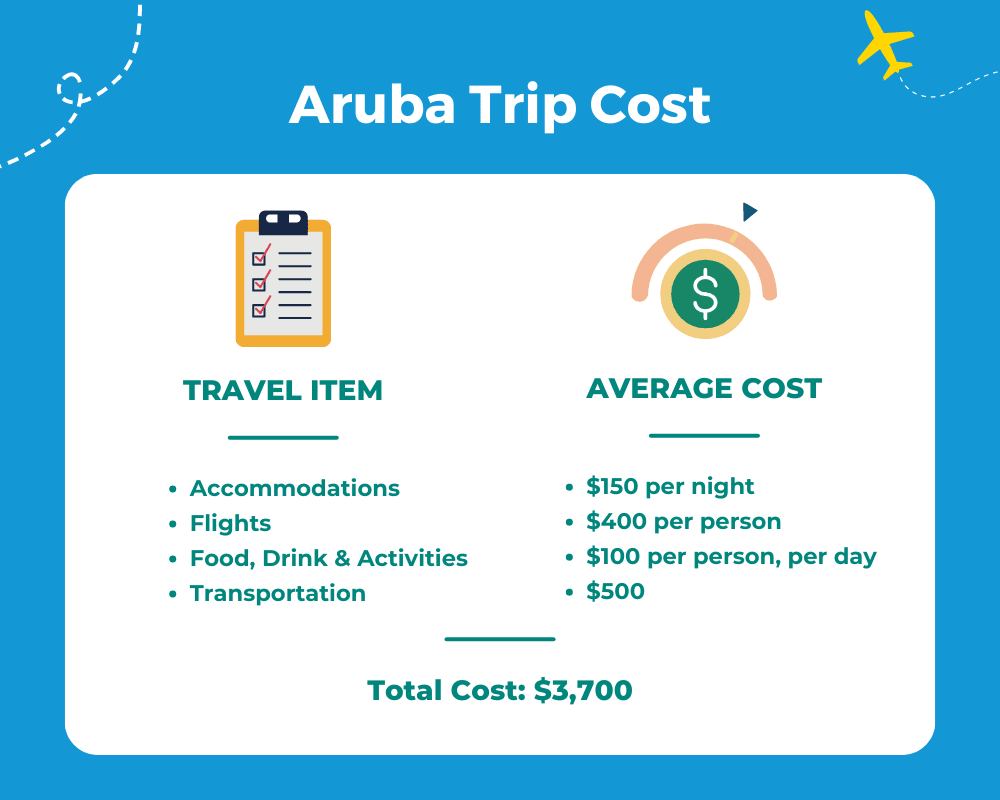
A one-week trip to Aruba for two will cost around $3,700:
- Average Accommodation Cost: $150 per night
- Average Flight Cost: $400 per ticket
- Food, Drink & Activities: $100 per person per day
- Transportation: $500 total
- Total Cost: $3,700
This is a moderate price for a Caribbean vacation, and there’s a reason for that. Once you pay for your plane tickets and accommodations, you’re not required to spend much more.
Hotel expense is the biggest part of the bill and will be the main factor in how much your trip costs. If you stay at one of the prestigious resorts, you may spend $1,000 or more above what’s listed here.
On the other hand, you can drive costs way down with budget hotels, Airbnbs or hostels, and by eating from grocery stores and roadside vendors. Prices will be higher during the peak season, from November through March.
Aruba Trip Cost: Average by Item
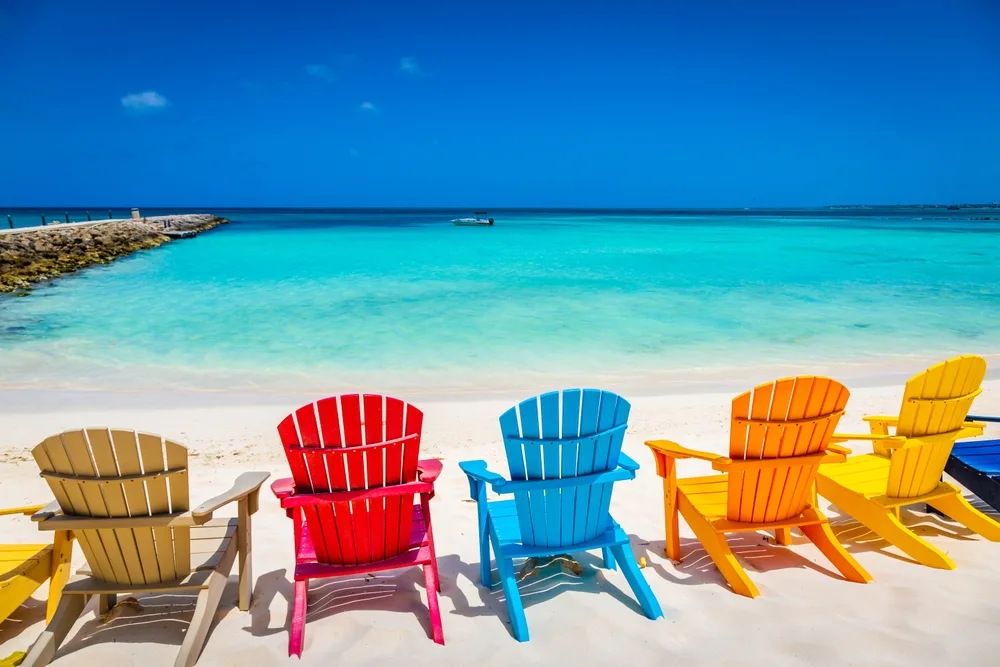
PositiveTravelArt/Shutterstock
From a budgeting perspective, ideal times to go are the so-called “shoulder seasons” in fall and spring.
As with many island destinations, the all-inclusive hotel is an alternative. Expect per-week cost to be around $2,000 per person, possibly more, creating a higher overall expense.
Accommodation Costs
A survey of 100 hotels on Aruba shows an average price of $215 and a median price of about $150. That’s on the high side compared to most of North America but not particularity expensive for the Caribbean.
However, it’s possible to find accommodations that cost quite a bit less. For example, the average for budget hotels is closer to $100.
On the other hand, if you want the most luxurious accommodations, you might spend $400-$700 or even a bit more. Another choice is the all-inclusive resort, which may run about $4,000 for a week for two people.
There are less expensive alternatives to hotels. The least costly Airbnbs and VRBOs can be found for under $100. Aruba also has hostels. A shared room could be as little as $25.
Many of these bargains are outside the main areas. However, due to the small size of Aruba, you’re not far from the action, no matter where on the island you stay.
Flight Costs
Flights to Aruba from the U.S. aren’t prohibitively expensive. The most important airport is Queen Beatrix International, which is just outside Oranjestad. Kayak has reported flights from the Southeast as low as $200-$300 as little as $300-500 from the Northeast and Midwest.
There are frequently bargains available that may run even less. Skyscanner says that the lowest prices are available from September to November and from February to May.
Food, Drink & Activity Costs
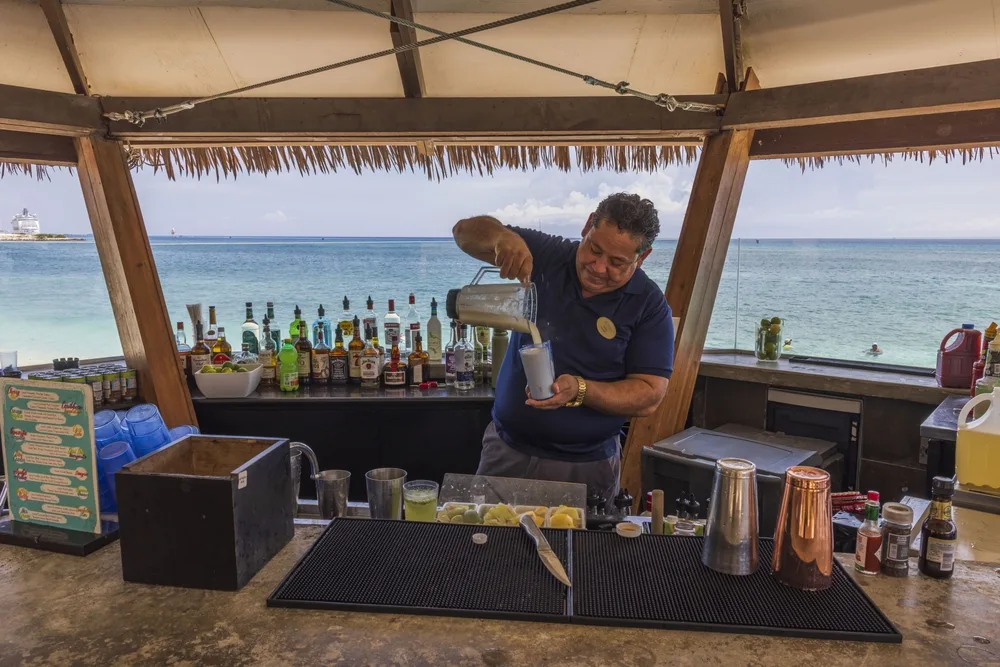
Close-up view of barman making cocktail in outdoor restaurant on coast of Atlantic Ocean. Oranjestad. Aruba. 01.31.2023./Mulevich/Shutterstock
Aruba has quite a few fine-dining restaurants, and you’ll drop a bundle on meals if you take most of yours there. However, there are plenty of other choices, from cafes to grocery stores to carry-out snack bars, and you can limit your food budget if you need to.
Typical dinner costs are from $20-$40. Tipping is appreciated but not absolutely expected. Some of the restaurants and bars may add a service charge to your bill, usually in the 10-15 percent range.
If it’s not added, and you want to express you satisfaction with the service, that 10-15 range is fine. At the cafes, you might just leave some spare change on the table or round up the price when you pay. Aruban cuisine, as you might expect, is heavily based on seafood.
You’ll also find an abundance of fresh regional ingredients. For the most authentic island cooking, visit the smaller cafes, where meals might cost half the price of a hotel restaurant.
One traditional dish is keshi yenai, a casserole of chicken, olives, raisins and spices, all topped with melted Gouda. It might run $7-$15 depending on the establishment. The there’s pisca hasa croyo, pieces of fish with onion gravy, at around $10 in a cafe.
Food stands and food tracks are a growing scene. There are filling meals to be had in the $5-$10 range. Look for pastechi, a stuffed and deep-fried pastry. Cheese is a common filling, but you’ll also find chicken, beef, ham and fish.
Another Aruba treat is cake, available at carry-out for around $3 a slice. Try the bread pudding, cashew cake or prune cake. Superfoods is a popular grocery store on the island.
The Dutch brands carry the lowest prices. Alcoholic beverages are reasonably priced in supermarkets, as opposed to bars and restaurants, where they may be a little higher than American prices.
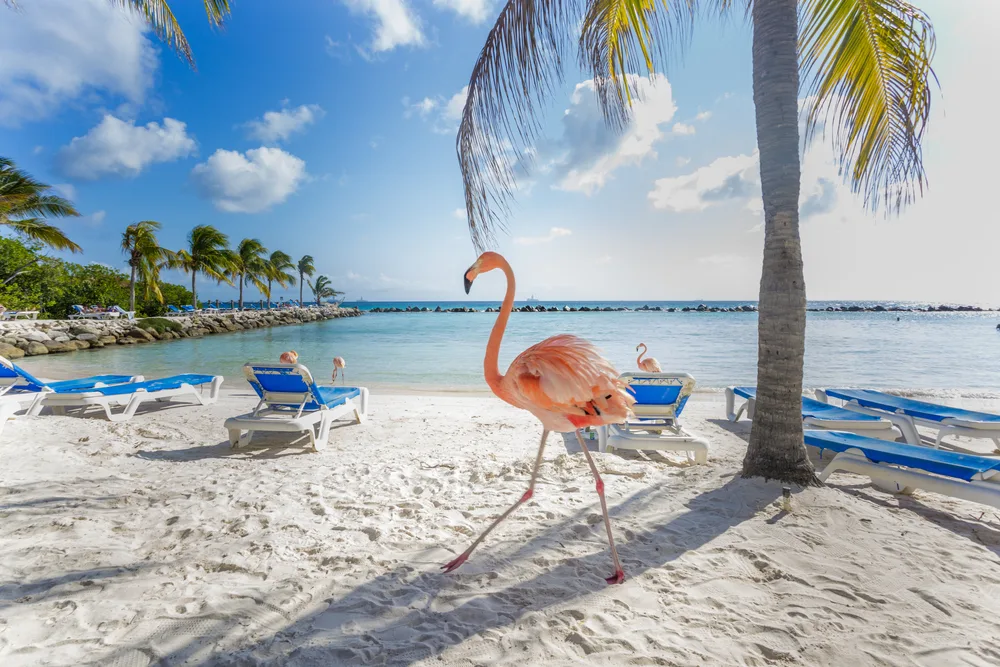
MasterPhoto/Shutterstock
The most popular activity for Aruba tourists is enjoying the beach, and you don’t have to spend any money to do it. The sand and the water is as delightful as any in the world. Another free activity is walking the streets of Oranjestad and enjoying the Dutch culture and architecture.
Arikok National Park is a must-see. It occupies 20 percent of the island, and it can take three days to get your fill of it. There’s a natural summing pool, and famous rock formations offer a splendid view of the countryside around.
If you have a car, you can explore it on your own, and the entrance fee is only $11 per person. Organized tours are also available. The adjacent Donkey Sanctuary is open with no admissions charge, though they do encourage donations.
Aruba has plenty of hiking and horseback riding. Windsurfing is a popular sport. Many tourists will splurge and take advantage of one or two of the special activities on offer. UTV tours, which sometimes include cliff jumps, are $120 and up.
Horseback tours might be under $100, and a catamaran sail will be in the $50-$100 range.
There are a variety of day and evening cruises, which might include a meal and even some snorkeling, at $60-$100. A full day of diving is more costly at $200 or more. You can even take a ride on a submarine at $125 and up.
Transportation Costs
Aruba is only about 70 square miles, so it’s not hard to get around. There’s a public bus network as well as several private buses owned by resorts. The public service, Airbus, leaves from Oranjestad every 15 minutes from 5:40 AM to 6:00 PM.
It continues to run every 40 minutes until 11:30. Two-way bus trips cost around $5, or you can buy a day pass for about $10. You can also pick up a Smart Card, which carries an $8 fee but cuts the per-trip fare roughly in half.
The bus routes cover most of the towns and top tourist attractions as well as all the big resorts and beaches. Taxis are available but not cheap. The minimum is $7.
However, fares are set by local government, and cabs are safe, quick and reliable. Oranjestad has a free hop-on, hop-off tram, which circuits six popular tourist destinations. Rental cars are available for those who want to visit every spot on the island.
They’re also necessary to explore Arikok Park on your own. Kayak reports the average daily cost at just over $50. Gas is over $6 a gallon, but, considering the size of Aruba, you can expect not to use much.
Motorbikes and motor scooters are practical options starting around $30 per day. There are also bicycle rentals and a number of bike trails to use them on.
Things to Consider
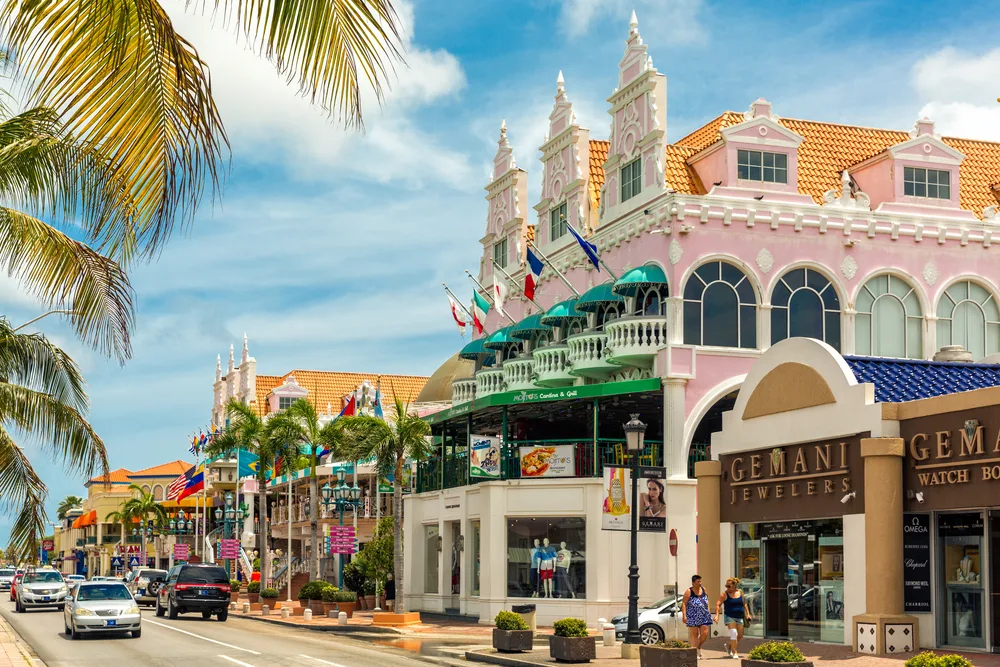
ORANJESTAD, ARUBA – JULY 25, 2017: Lloyd G. Smith Boulevard on a summer day. This main thoroughfare in the city has recently become an important shopping area./Mihai_Andritoiu/Shutterstock
Here are some useful facts for your Aruba vacation:
- The island currency is the Aruban florin. U.S. dollars are widely accepted, and the currency rate is fixed at 1.77 florins per dollar for cash and 1.78 for traveler’s checks. Most businesses round the rate when taking dollars, 1.75 in supermarkets and gas stations and 1.8 at many restaurants and shops. Some businesses refuse American fifties and hundreds due to counterfeiting concerns.
- You can withdraw money at more than 50 ATMs. You need a Cirrus, MasterCard, Visa or Maestro logo.
- Free public restrooms are limited. Carry a few U.S. dollar bills to deal with this contingency.
- If you like to shop, budget extra money. Aruba has been called “the shopping paradise of the Caribbean.” Selection is world-class, and prices can be 10-35 percent lower than in the states.
Frequently Asked Questions
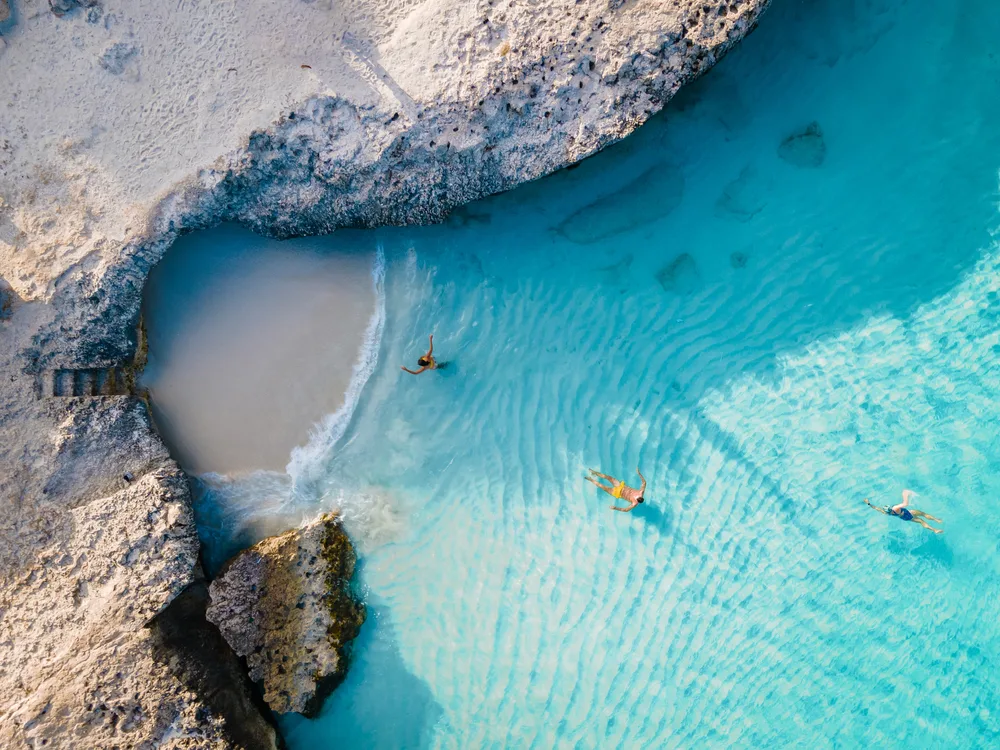
fokke baarssen/Shutterstock
Here are a few frequently asked questions to help you budget your next trip to Aruba:
What language do they speak in Aruba?
The official languages are Dutch and Portuguese-based Papiamento. However, most Arubans are multilingual and also speak English and Spanish.
How long does it take to drive around the entire island of Aruba?
Because the island is only six by 20 miles, you can drive the length of Aruba in about 45 minutes and all the way around in a couple of hours. Speed limits are low, at 30 km/h (18 mph) in towns, 60 km/h (37 mph) in the open and 80 km/h (50mph) on the fastest road. Traffic drives on the right.
How many days is ideal for Aruba?
While you could fly in for a long weekend and enjoy the beaches, there’s more to see than water and sand. Four to seven days will be adequate to visit all the most interesting sights.
Is it safe to swim in the ocean in Aruba?
It requires caution. That’s because there’s a lot of coral that can cut your feet. Ask about the area where you plan to swim, and wear booties if coral is present.
Can you drink tap water on Aruba?
Yes! There’s little natural fresh water on Aruba, and the drinking supply comes from desalination plants. Their process meets the highest standards, and the water is some of the cleanest in the world.
So, What is the Average Cost for an Aruba Trip?
| 🛎️ Average Accommodation Cost | $150 per night |
| ✈️ Average Flight Cost | $400 per person |
| 🍽️ Food, Drink & Activities | $100 per person, per day |
| 🚕 Transportation | $500 |
| 💲 Total Cost | $3,700 |
That’s not bad for the Caribbean. A luxury trip will cost quite a bit more, and a budget trip can be a lot less. Every trip, however, includes the magical beaches, Dutch architecture and breathtaking scenery that’s part of this One Happy Island.
So, with so much to see and do, what are you waiting for — book your trip today and experience for yourself all that Aruba has to offer. Happy travels!



